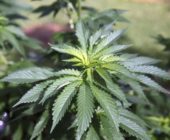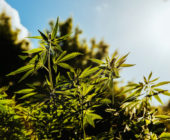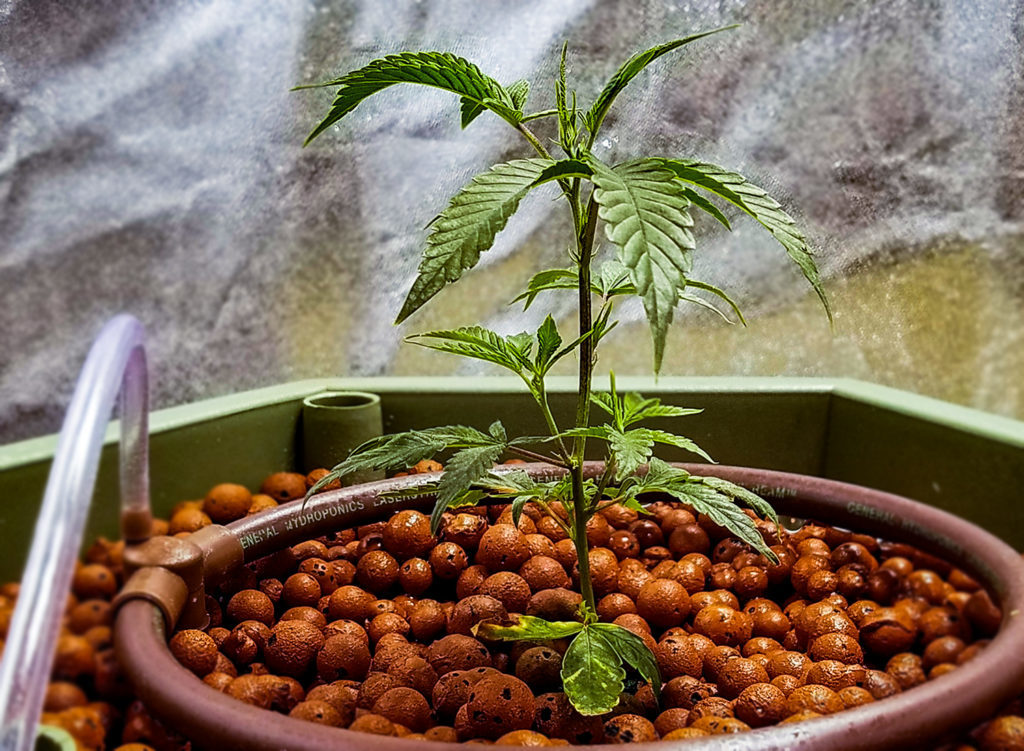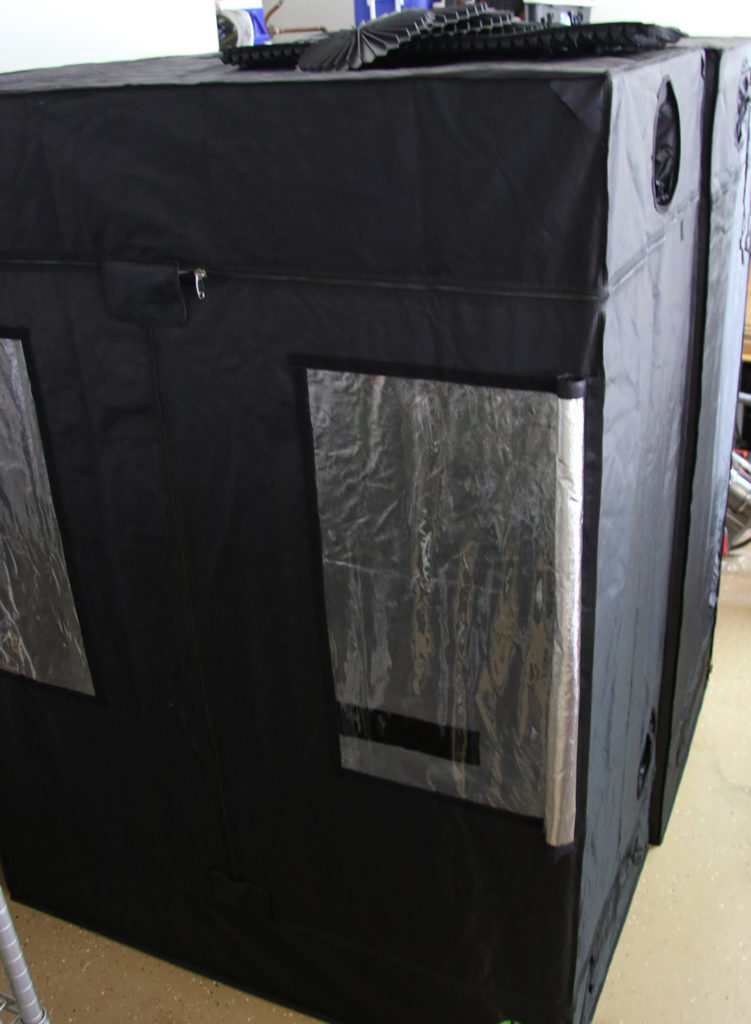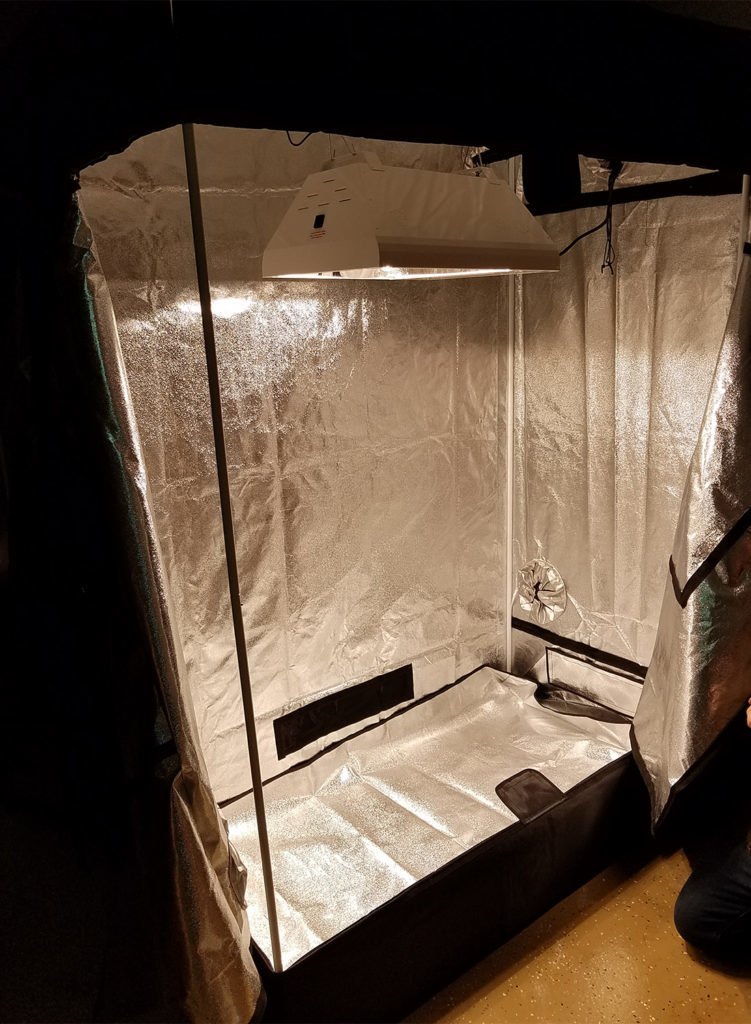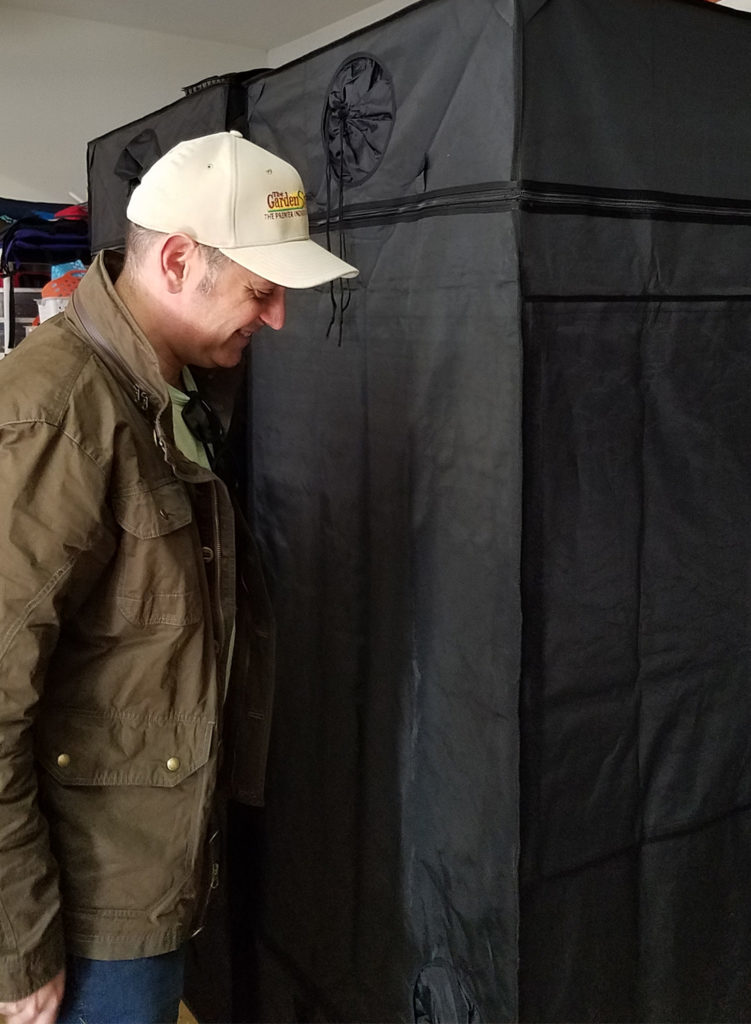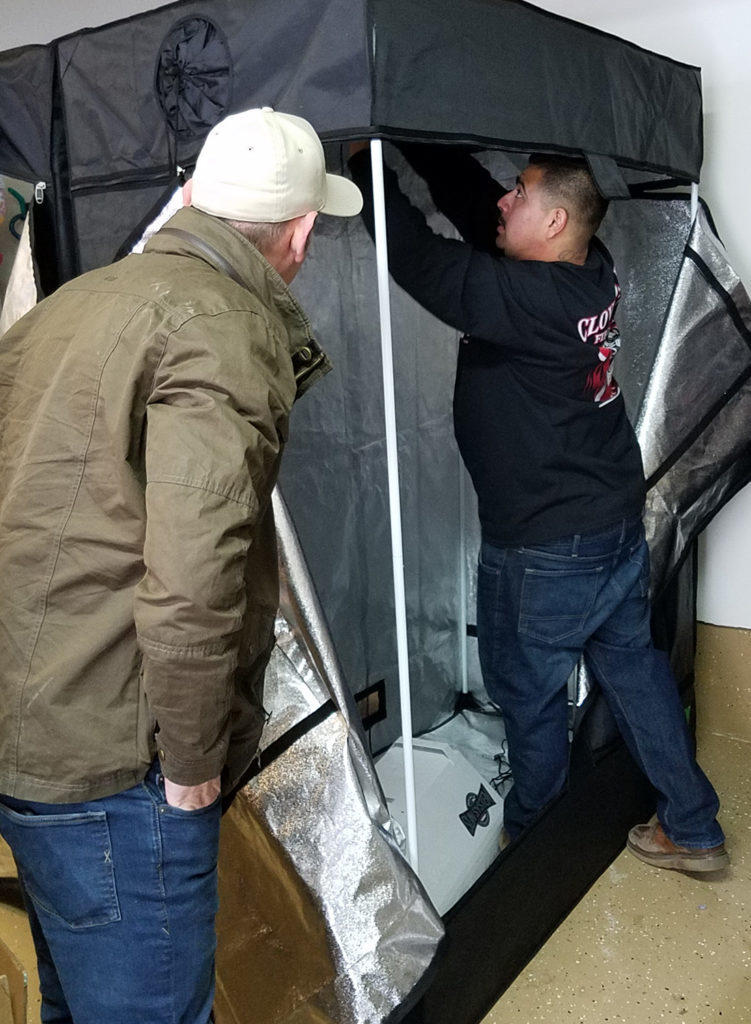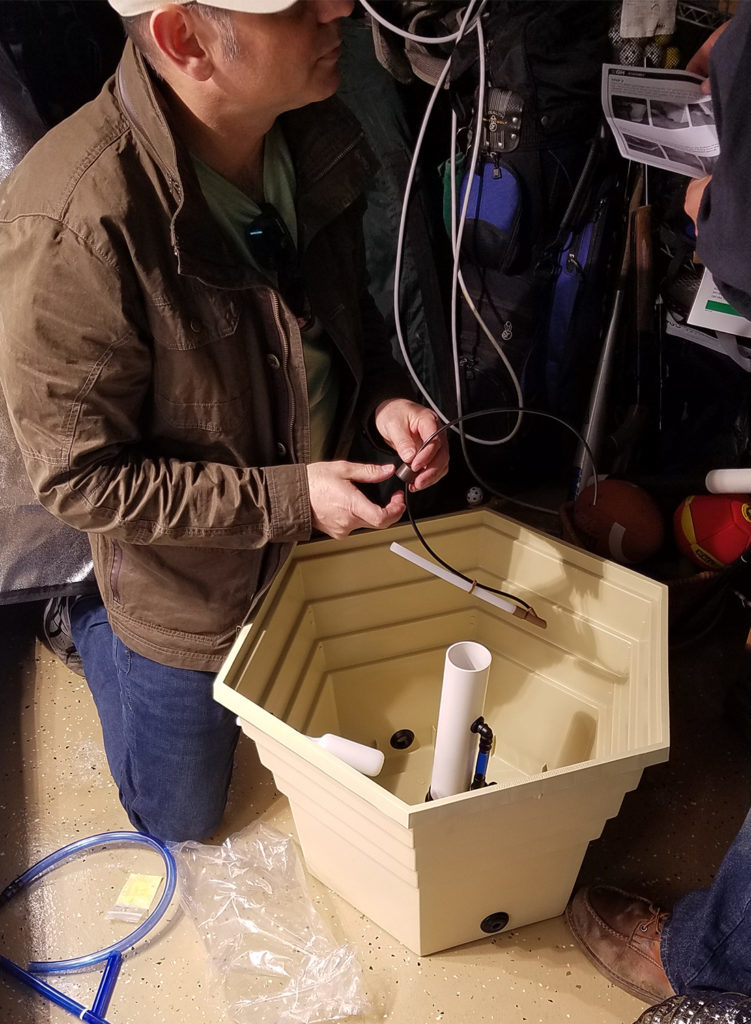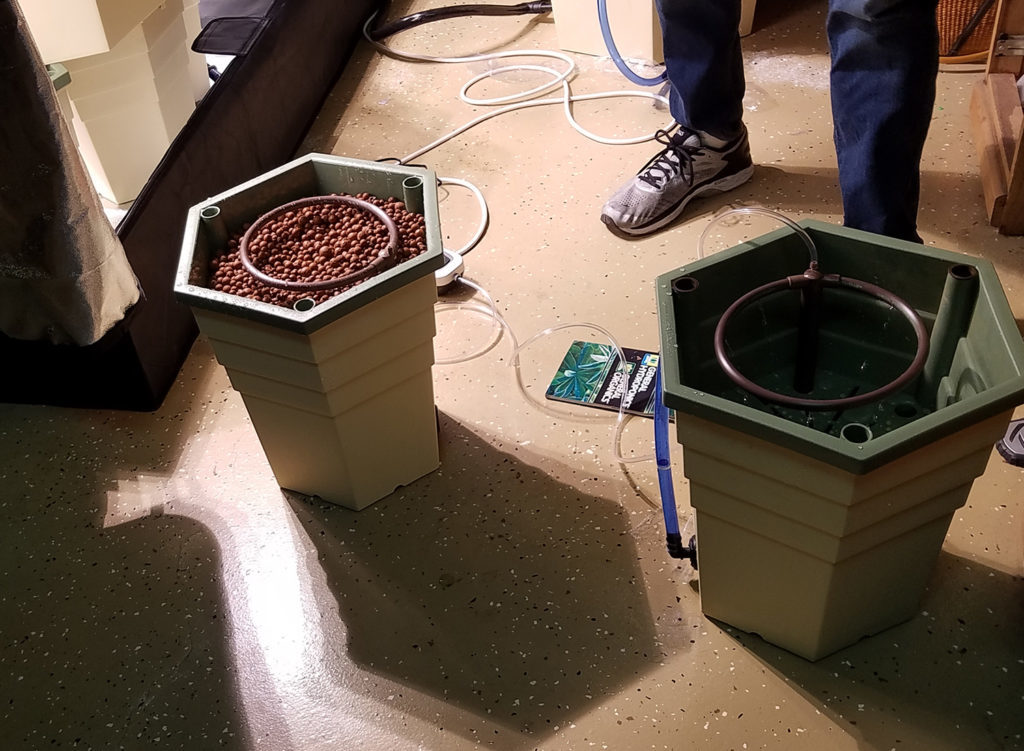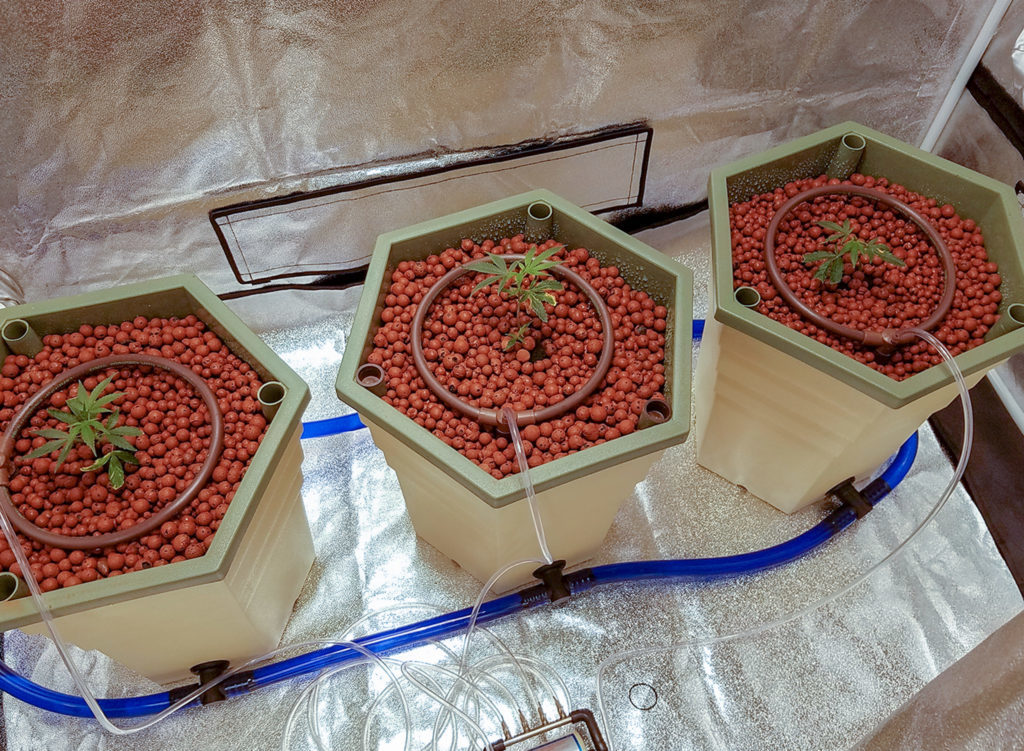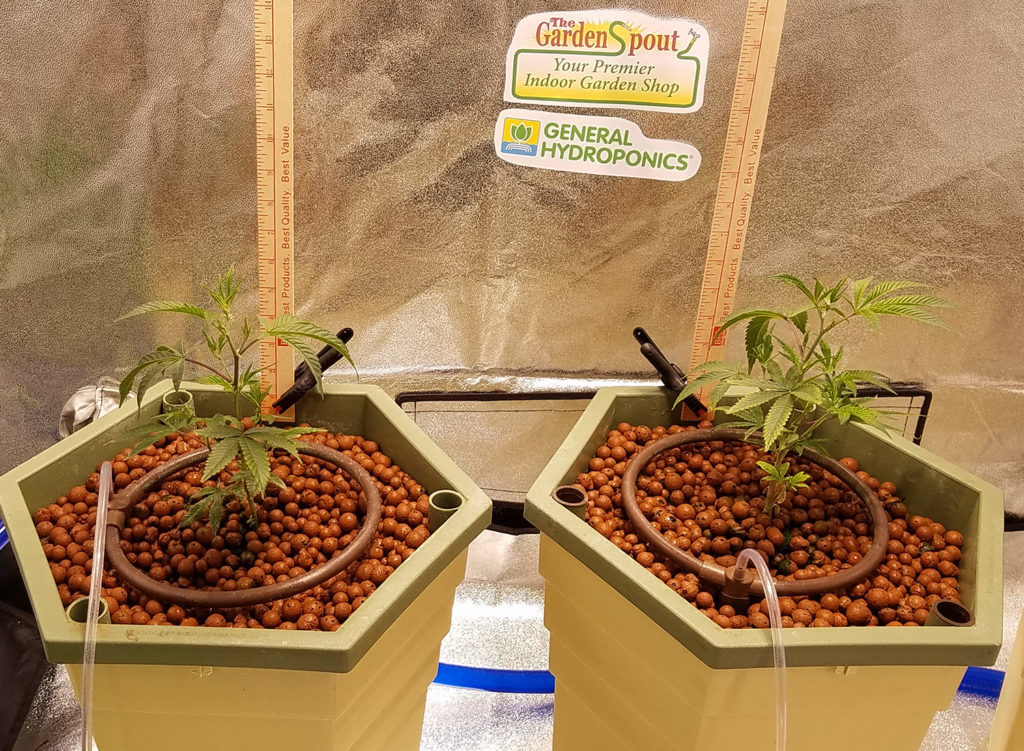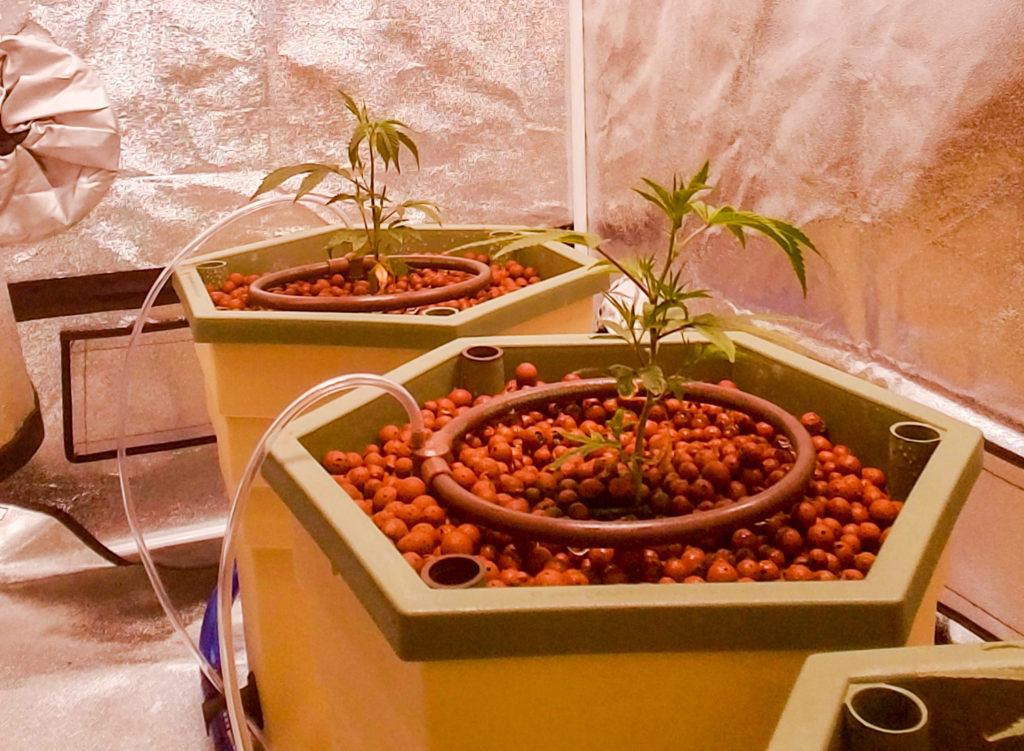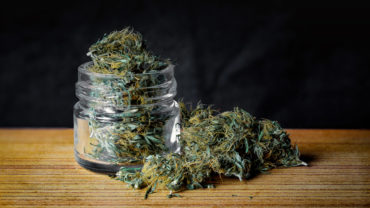Good to Grow is a weekly diary of a clueless black-thumb learning to grow cannabis.
Read Chapter 1 & 2
Chapter 3: Step Three: We Got Hydro, We Got Tents.

Gaby on move in day. Good to Grow
It’s move-in day for the plants. General Hydroponics has agreed to donate a Power Grower 8-Pack hydroponic setup for this experiment. The retail cost of the kit itself is more than $600, not including lights, food, and all the other stuff we’ll need.
Frankly, I’m surprised. Gaby isn’t. He says he knows a guy. I commit, because thinking things all the way through isn’t my jam.
However, I have to get serious about cleaning the garage. Gaby and Chris come over to measure the space for the tents and hydro setup, noting that maybe I should clean the garage.
Meh. I clean half-heartedly that night. The garage is still a mess, but there’s a hoarder-style pathway for them to get through.
The next morning, Gaby and Chris bring in a whole bunch of stuff that looks like camping equipment. They’re the tents. Then these weird clay pebbles. They’re for the hydroponics, and you use them instead of dirt. Oddly enough, they must be pre-rinsed before using and are made in Germany. Who knew. There are lots of boxes and strange doo-dads.
We’re all taking pictures like new parents Instagramming baby’s nursery. Everyone leaves. I sit in the tent and flip on the lights. It’s super bright in there. #iprobablystaredatthelightstoolong

Plants in the hydro grow: Good to Grow
The next day, my bouncing little baby girls arrive. They’re adorable little nuggets of dirt and bright green leaves. I want to kiss their little buds. The tags say “Larry OG”. Strange, I was hoping for Girl Scout Cookies. Sorry, GSC. Or maybe Wonder Woman?
Here we grow, Larry.
“I’ll be back in a couple days,” says Gaby.
God, I hope I don’t kill these things by then.
Solution: Leave them alone until someone with actual plant skills returns. Turn lights on and off at odd intervals in the tent, then accidentally forget and leave them on. Overwater. Then try taking the water out. Spill dirt and water. Clean up mud. Try talking to a few plants as part of the experience. Oddly, the conversation seems one-sided.
What is hydroponics?
Growing plants without soil. That’s the most basic concept behind this growing method. It’s complex and scientific and rather technical, but it’s also highly efficient, using a series of pumps, hoses and tanks to circulate mineral-rich nutrients to the roots of whatever you’re growing.
Here’s Gaby’s explanation: “Hydroponics means your plants are not in the ground and are fed with a nutrient solution. Many people are scared of ” hydroponics ” because they don’t understand it, so I’m here to clear a few things up. Hydroponics doesn’t mean your growing with chemicals…. it means your growing with minerals. Plants eat minerals, not organic matter. When growing organically these organic compounds need to be broken down into minerals before the plants can uptake them. Minerals are the building blocks of all life on the planet. When using high quality minerals in hydroponic nutrients you are feeding your plants a very clean fertilizer made of minerals mined from the earth. Have you heard of E. coli on lettuce? Well it’s almost always found in organic crops. I mean we all know poop isn’t clean right?”
It always comes down to poop.
Some of the benefits of hydroponics
– Less water usage
– Can be used in small spaces
– Ability to grow out of season
– Less labor intensive
On the downside
– It can be very expensive to set up
– You need to know what you’re doing
– If water-borne microorganisms infect one plant, it affects all plants


